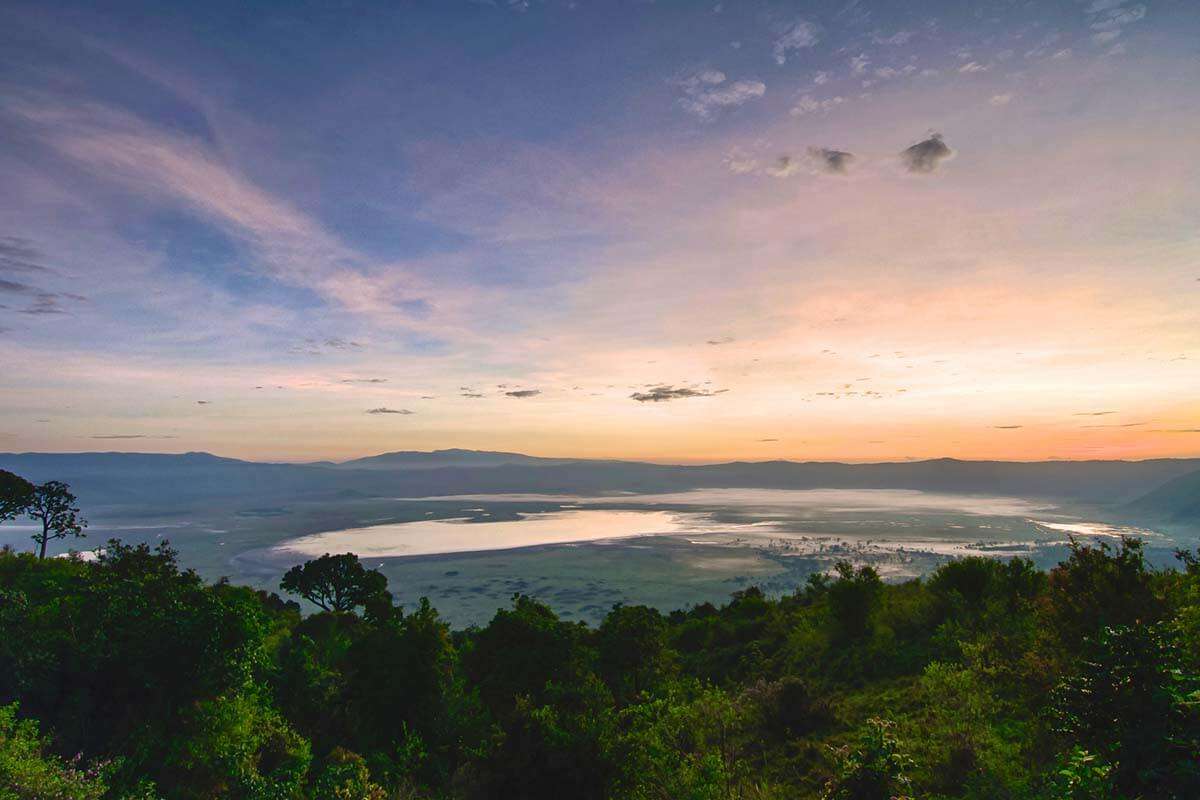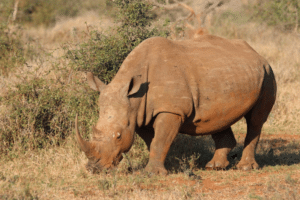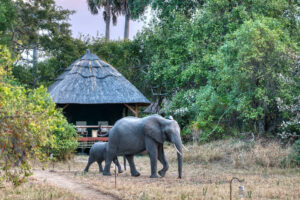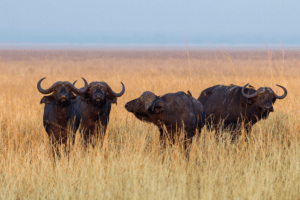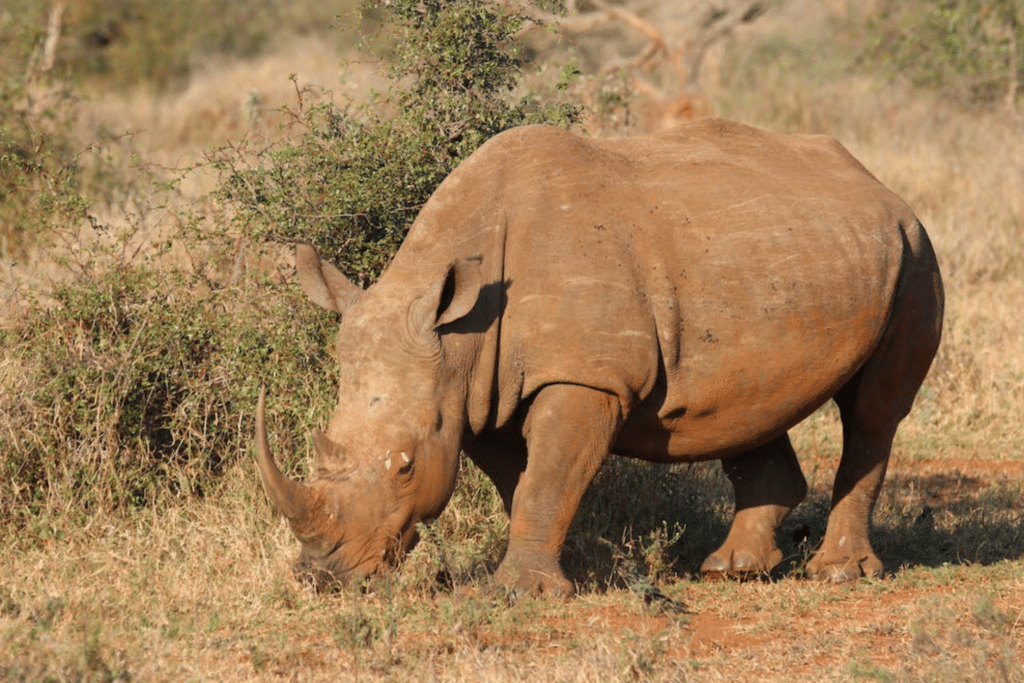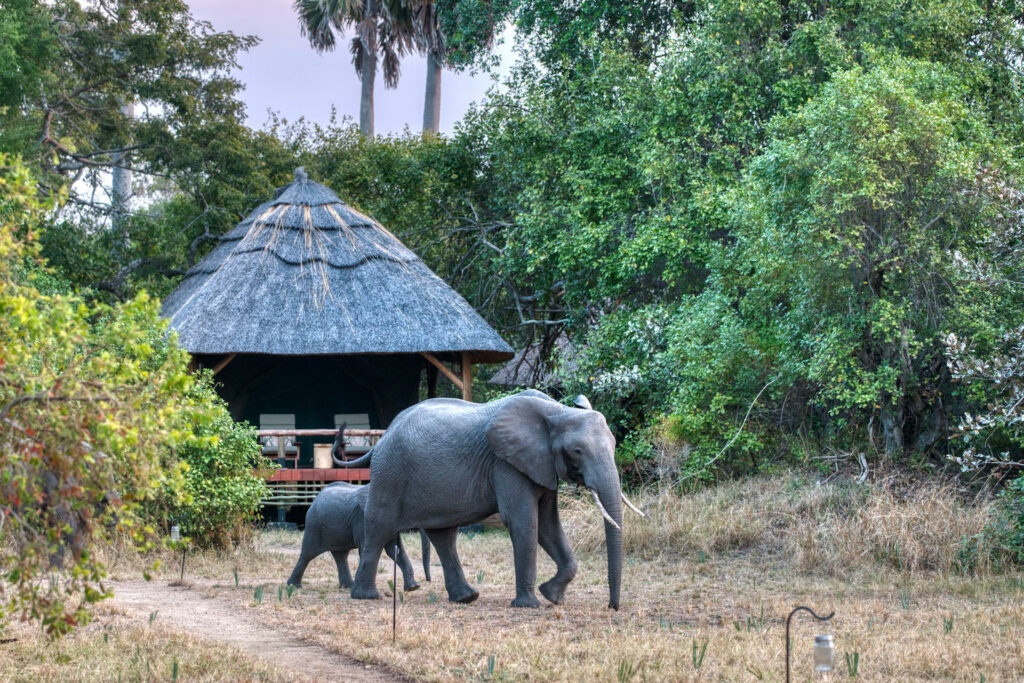Planning a trip to the Ngorongoro Crater? If you are, you might be curious about its fascinating history.
Around three million years ago, there was a massive supervolcano in what we now know as Northern Tanzania. This volcano was even taller and more powerful than nearby Mount Kilimanjaro.
Its summit reached the highest point in Africa, and its slopes were so vast that they controlled their own weather patterns and water flow. Everything was peaceful until, one day, the volcano woke up. Then it collapsed.
The eruption was so intense that it collapsed, forming a caldera over a hundred square miles—12 miles wide and 2,000 feet deep. What was once the highest peak on the continent became a hollow, opposite to its former grandeur.
But life returned. Over millions of years, this geological depression became filled with life. First, it trapped pockets of fresh water. Then, lush vegetation grew, attracting various wildlife.
The abundant water and grasses drew in ungulates, large predators, and countless bird species. Because of its enclosed nature, animals would enter this bowl-shaped area and rarely leave. It became the place to be.
The caldera became a thriving ecosystem as time passed, providing food for nearby human tribes. And so began the tale of one of Earth’s most stunning locations, an unparalleled arena of biodiversity. Welcome to the Ngorongoro Crater.
Your 60-second Ngorongoro history briefing
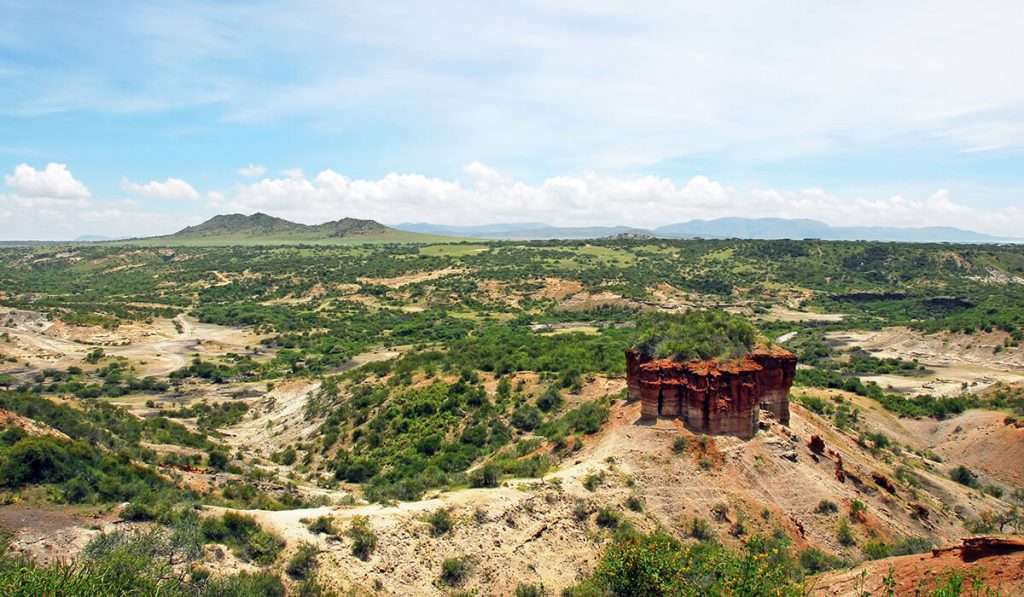
Picture the Ngorongoro Crater as a concentrated safari experience where all the best wildlife encounters are intensified. The action is magnified here, drawing you closer to the heart of nature’s drama.
Wildlife thrives in remarkable density inside this ancient caldera, offering unparalleled predator-prey interactions. Human presence in the area dates back millions of years, with early hunter-gatherer groups followed by pastoralist communities like the Mbulu, Datooga, and Maasai.
European explorers arrived in the crater in 1892, sparking interest in this natural wonder. Over the years, it gained attention from travelers worldwide, leading to its designation as a protected area in 1959 and later as a UNESCO World Heritage Site in 1979.
Today, the Ngorongoro Conservation Area attracts over half a million visitors annually, drawn by its unique biodiversity and rich cultural heritage.
Top 10 facts about the Ngorongoro Crater you should know
So you’re sold. You now understand what all the hype is about: Ngorongoro is ground zero for a millions-year-old volcano that blasted off like a rocket, was supplanted by a vast caldera, and is stuffed with more lions, rhinos, and wildebeest than you could ever possibly imagine. You’re in.
But before you visit the Ngorongoro Crater, here are ten essential facts you should know. Cram these in your noggin before arriving, and I promise your awe of this place will quadruple.
1. It's one of the largest unbroken calderas on the planet (that's not a lake).
A caldera forms when a volcano erupts massive amounts of magma swiftly, causing the volcano to collapse inward, creating a bowl-shaped depression. While calderas are rare geological features, the Ngorongoro Crater is the largest unbroken caldera globally that hasn’t become a lake. (Source)
2) Over 25,000 wild creatures in the caldera (Gulp.)
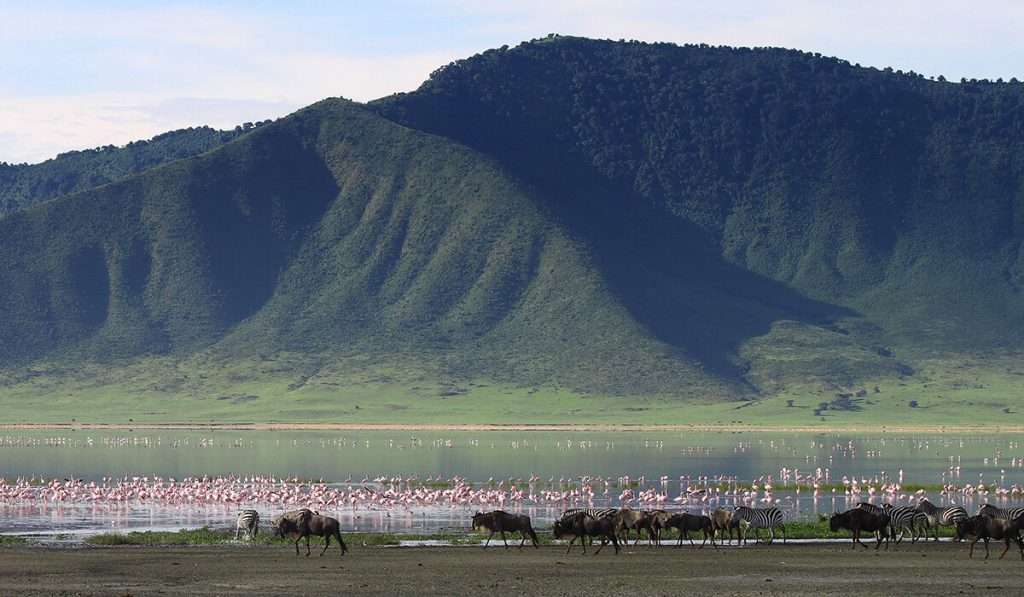
Prepare to be amazed: in the Ngorongoro Crater, you’ll find an astonishing array of wildlife, including 7,000 wildebeest, 4,000 zebras, 3,000 gazelles, 3,000 elands, 600 hyenas, 200-300 elephants, over 60 lions, and 30 rhinos, along with many other animals. It’s like a bustling city for wildlife!
3. More Prides Per Capita (PPC) than anywhere on Earth.
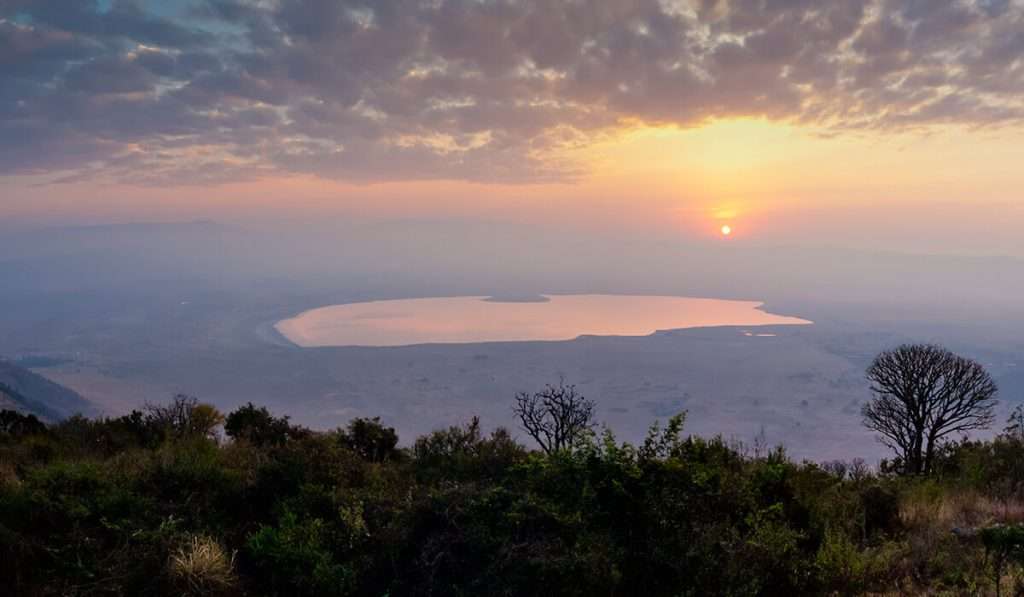
This single caldera contains 55-65 permanent lion residents on the crater floor, one of Earth’s highest densities of lion pride. Whoa. The PPC (Prides Per Capita) is about as high as it gets here in Ngorongoro.
4. Your best chance to spot a black rhino (and complete your big 5)!
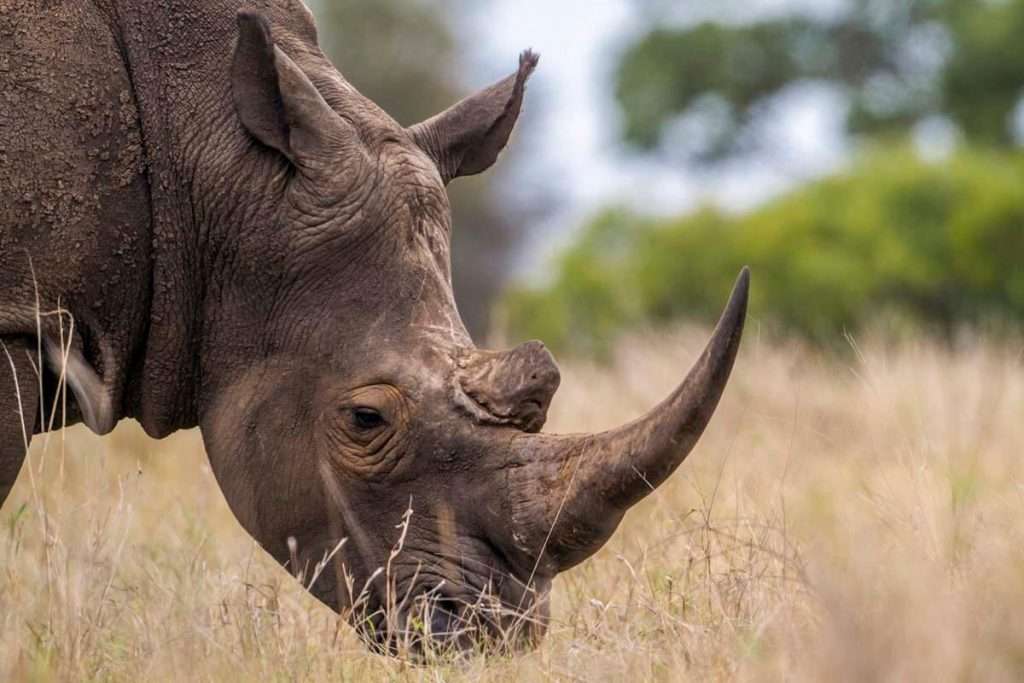
Seeing your first black rhino is like a scene from Jurassic Park. With two massive horns and a hooked upper lip, they look like something from a different era.
Rhinos were on the brink of extinction in the 1970s. However, due to continued conservation efforts, their population is now over 5,000 worldwide, of which 30 live within the Ngorongoro Crater. This will also be your best chance to knock out the Big 5!
5. Our earliest human ancestors lived here.

Within the greater Ngorongoro Conservation Area exists the Oldupai Gorge, a steep ravine in the Great Rift Valley where paleoanthropologists Louis and Mark Leakey famously discovered traces of homo habilis, our first known human species, reaching back 2 million years. Two million years? Mind blown. Read more here: Source.
6. The birding is crazy good.
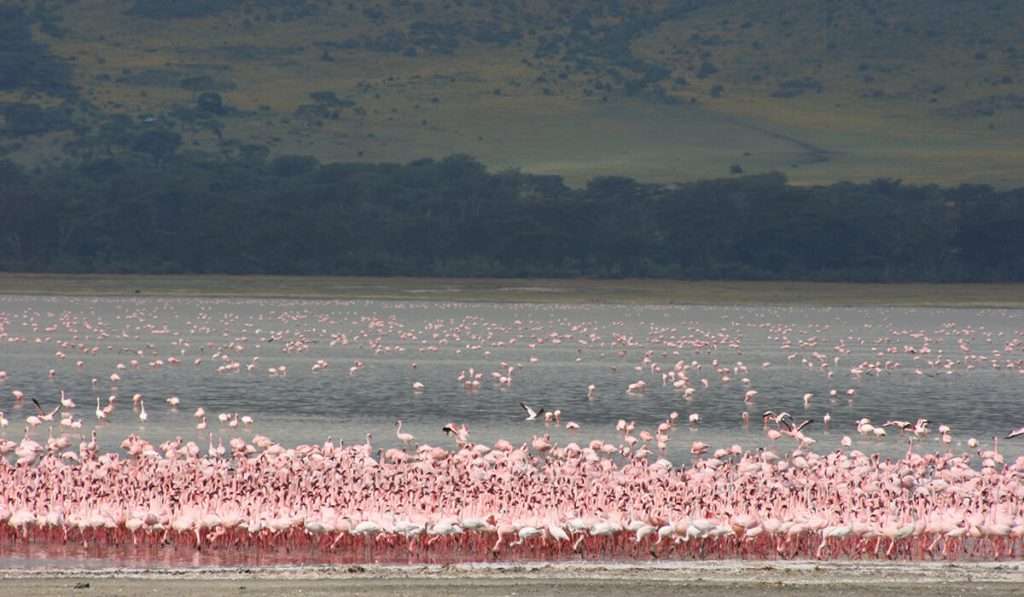
For friends of the winged ones, look no further. Within this caldera, you will find 500 bird species—ostriches, kori bustards, secretary birds…you name it. Visit from November to April and witness the myriad migratory birds residing here. For more info about birdlife in Tanzania, click here!
7) Best time to visit? May to October.

You can see wildlife within the Ngorongoro Crater pretty much any time, but from May to October, it’s drier, and there is less grass, so the animals are more concentrated. Overall, here’s our take on the best time to visit Tanzania.
8) You can sleep on the caldera rim.
If the primary attraction to Tanzania is wildlife, the second might be its unbelievable accommodations throughout the country. Easy Travel constantly researches the finest digs to rest your head after a long day, and Ngorongoro’s lodges are some of our favorites.
Imagine watching the sunset behind the caldera from the deck of your bush lodge! Take a detailed look at one luxury lodge here.
9) A million wildebeest might pass through (literally).
The Great Wildebeest Migration passes through the Ngorongoro Conservation Area, specifically Lake Ndutu, from December to March. The sheer number of wildebeest, zebra, and gazelles (over 2 million) means roads often get jammed with animals as far as the eye can see. It’s worth it.
10) It’s one of Africa’s seven natural wonders.
Simply put, there’s much to choose from on the African continent: The Nile River. The Sahara. The Okavango Delta. So, to crack the list of seven natural wonders of Africa is quite an accomplishment. Source.
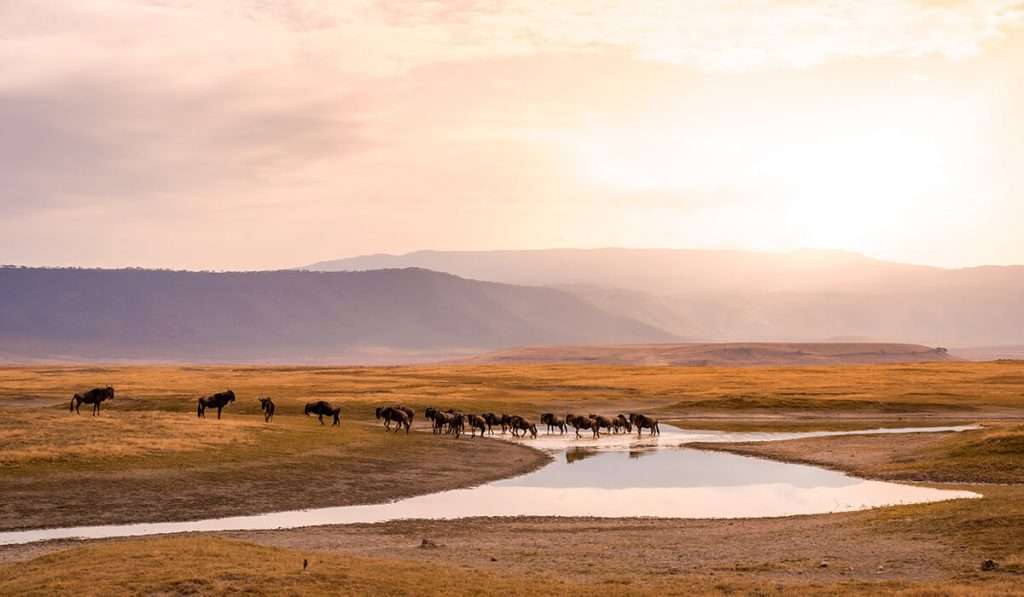
Bottom line?
The Serengeti may be Tanzania’s most famous park, and for good reason. But the second you wind down into the Ngorongoro Crater, something shifts in the air, and every hair on your body stands at attention.
From the first minute to the last, your head will swell as the interactions between wildlife species here jockey for position around you.
Ready to go? Contact us today, and let’s make Ngorongoro part of your bucket list itinerary.
Getting you there?
Ngorongoro Conservation Area is a UNESCO Heritage site, and the Ngorongoro Crater, a large volcanic caldera in the area, is rarely described as anything other than “stunning.” Our friends at Easy Travel have been leading tours to explore the Ngorongoro Crater for over 30 years and have created various Safari Experiences for every type of adventurer.
Are you looking to join us on a tour of the Ngorongoro Crater? Or are you interested in your tailor-made tour? Contact Us today to get started.
Frequently Asked Questions (FAQs)
What is the Ngorongoro Crater?
The Ngorongoro Crater is a massive volcanic caldera with immense geological history. It lies within the Ngorongoro Conservation Area in Tanzania, a continuous emerald mountain range with unique beauty and breathtaking landscapes, making it a popular destination for nature lovers and beyond. It is an iconic location for safari expeditions and helps reveal the sprawling wildlife that encompasses it.
How was the Ngorongoro Crater created?
The Ngorongoro Crater, situated in the Ngorongoro Conservation Area of Tanzania, is an enormous volcanic caldera formed millions of years ago. This unbroken caldera is known for its stunning scenery and the diverse range of wildlife found in the area. It is located very close to other national parks and conservation areas, making it an excellent place for visitors to have an unforgettable safari experience.
The Ngorongoro Crater is a truly fantastic place to visit, and guests can take part in exciting safaris that allow them to see the many animals mingling on the crater floor. Elephants, lions, hippos, and wildebeests are just a tiny sample of the many land animals that can be spotted while visiting the Ngorongoro Crater.
What makes the Ngorongoro Crater unique?
As the Ngorongoro Crater transitions into peak safari season, this sunken caldera is beginning to teem with life. During this dry season migration, which usually occurs between late July and early October, animals return to the crater for water and green grazing.
Spurred by this seasonal shift, Ngorongoro Crater visitors will surely see a fantastic array of wildlife. Sand-colored lions prowl the savannah, gazing at the zebra and buffalo congregating by the water to chew the cud.
Scores of rose-pink flamingos are wallowing in the lakes. At the same time, Guineafowl scuttles over the lake shores, and beyond them is the abundant lattice of many sophisticated black-and-white waterbirds.
What can I expect on a Ngorongoro Crater safari?
Embarking on a Ngorongoro Crater safari allows visitors to immerse themselves in the vibrant ecosystem of East Africa, where iconic wildlife roams freely. From the elusive big cats to the massive elephants and rare black rhinos, the crater brings a matchless chance to witness these majestic creatures up close.
As the safari progresses, travelers can take in the breathtaking landscapes, including the lush vegetation and sparkling lakes that dot the crater floor. With experienced guides to lead the way, you will learn what roles the different species play in the complex social order—and the delicate balance overall—within the crater itself.
How do I get to the Ngorongoro Crater?
Kilimanjaro International Airport is the primary entry point for travelers visiting the Ngorongoro Crater region, providing convenient access to Tanzania’s celebrated national parks and conservation areas. Upon arrival, visitors can seamlessly transition to guided tours and safaris, which offer comfortable transportation to the crater and other notable attractions in the area.
Experienced guides ensure a smooth journey, providing valuable insights into the region’s history, ecology, and wildlife. Whether by road or air, reaching the Ngorongoro Crater is the first step toward an unforgettable adventure in the heart of East Africa’s natural wonders.
What are some interesting facts about the Ngorongoro Crater?
Nearby Olduvai Gorge has produced some of the most significant archaeological finds related to the ancestors of early humans, and the areas surrounding the Ngorongoro Crater have proved invaluable in filling in the gaps in our understanding of the evolutionary journey of early humans and the way that they and their relationship with their environment have evolved.
Together, the steep walls of the crater and the volcanic cone that help give rise to the area’s distinct geography make the crater enjoyable for geological excursions as much as for its natural beauty. With each safari into the crater, it’s hard to escape feeling as though you are experiencing a wildlife adventure in one of the oldest cathedrals of time: from the geologic features to the stories of evolution that they tell, down to the modern-day animals that have made it their home.
What is the best time to visit the Ngorongoro Crater?
During the dry months from June to October, the Ngorongoro Crater experiences its peak safari season as wildlife gathers around water sources, providing excellent viewing opportunities for visitors. However, the crater’s beauty and biodiversity are captivating year-round, with each season offering distinct experiences and wildlife sightings.
Travelers can witness the dramatic spectacle of the Great Migration during certain times of the year or enjoy quieter moments amid lush vegetation during the wet season. Regardless of the season, visiting the Ngorongoro Crater promises unforgettable encounters with Africa’s remarkable wildlife and stunning landscapes.
How does the Ngorongoro Crater contribute to understanding human evolution?
The Ngorongoro Crater region, notably locations like Olduvai Gorge, has been instrumental in unearthing crucial archaeological discoveries concerning human evolution. Fossilized remains and ancient artifacts here offer invaluable insights into the origins and progression of early human ancestors, shedding light on their lifestyles and environmental interactions.
These findings contribute to our understanding of human evolution and the complex history of the African continent. Exploring sites like Olduvai Gorge allows visitors to connect with our shared human heritage and appreciate the rich tapestry of life that has unfolded over millennia.
What are the Ngorongoro Highlands?
The Ngorongoro Highlands encircling the crater boast a rich tapestry of landscapes, including verdant forests, expansive grasslands, and towering volcanic peaks. This diverse ecosystem provides vital habitats for wildlife, contributing to the Ngorongoro Crater’s remarkable biodiversity and ecological importance.
The highlands’ lush vegetation and varied terrain add to the region’s scenic allure, attracting visitors eager to explore its natural wonders and encounter its diverse flora and fauna. As an integral part of the Ngorongoro Conservation Area, these highlands preserve the ecological balance and support sustainable tourism initiatives.
Can you describe the geological features of the Ngorongoro Crater?
Millions of years ago, the Ngorongoro Crater was formed from the collapse of a massive volcanic mountain. Its distinctive bowl-shaped hollow was born from this colossal event and now stands as a geological marvel in its own right.
Commanding dramatic views with imposing crater walls, a towering volcanic cone, and the unbroken caldera rim, the crater is a natural wonder that serves as an iconic symbol of East Africa. Today, the Ngorongoro Crater remains one of the sought-after safari destinations in Tanzania by travelers seeking adventure and discovery in the heart of the country’s wildest lands.
How does the Ngorongoro Crater transform during different seasons?
During the rainy season, the Ngorongoro Crater is transformed into a lush green paradise, offering its inhabitants a veritable feast. The local wildlife reveals themselves at various water sources, giving visitors a fantastic viewing opportunity.
Conversely, the dry season presents an entirely different opportunity. Without a drop of rain, the skies are clear and the vegetation less abundant, making the animals much more straightforward to spot against the most stunning backdrops. Given these seasonal changes, the Ngorongoro Crater is just magical any time of the year, to be honest.
What activities can I enjoy while visiting the Ngorongoro Crater?
Exploring the Ngorongoro Crater offers visitors a range of activities, from thrilling game drives to insightful guided nature walks. Additionally, cultural experiences with the Maasai communities provide a unique insight into the local way of life. These activities ensure that visitors can immerse themselves fully in the rich biodiversity and cultural heritage of the Ngorongoro Crater.
Are there accommodations available near the Ngorongoro Crater?
Various accommodations are available near the Ngorongoro Crater, from luxury lodges to tented camps. These offer comfortable and convenient lodging options for visitors and often provide stunning views of the crater and surrounding landscapes.
What safety measures should I consider during a Ngorongoro Crater safari?
While the Ngorongoro Crater is a safe destination for visitors, it’s essential to follow guidelines provided by experienced guides and tour operators. Visitors should avoid approaching or feeding wild animals and adhere to designated viewing areas to ensure a safe and enjoyable safari experience.
How does the Ngorongoro Crater contribute to Tanzania’s tourism industry?
Tanzania’s Ngorongoro Crater is a significant tourist attraction, drawing visitors worldwide to experience its natural beauty and abundant wildlife. The crater’s popularity contributes to Tanzania’s tourism industry, supporting local economies and conservation efforts in the region.













